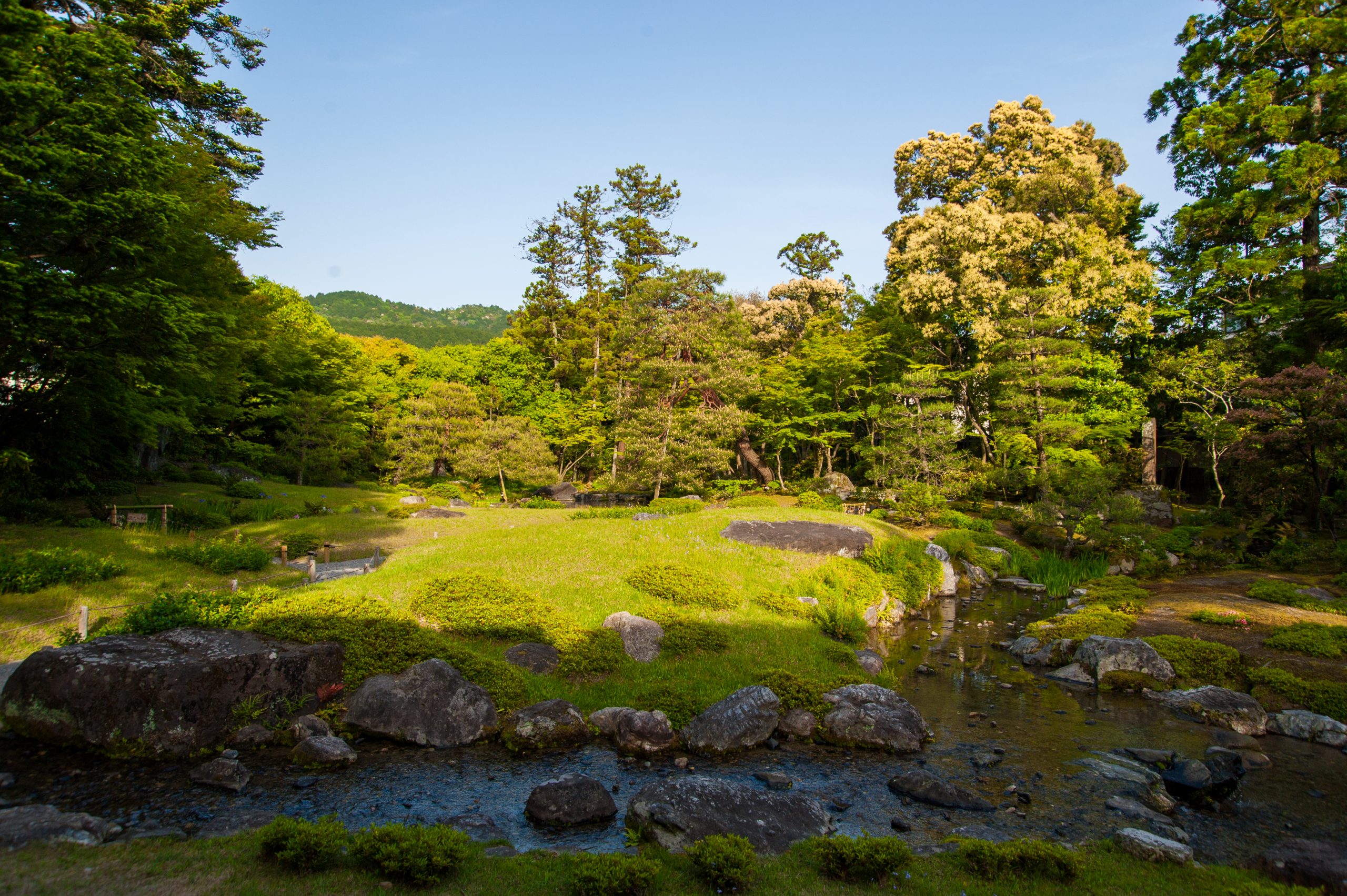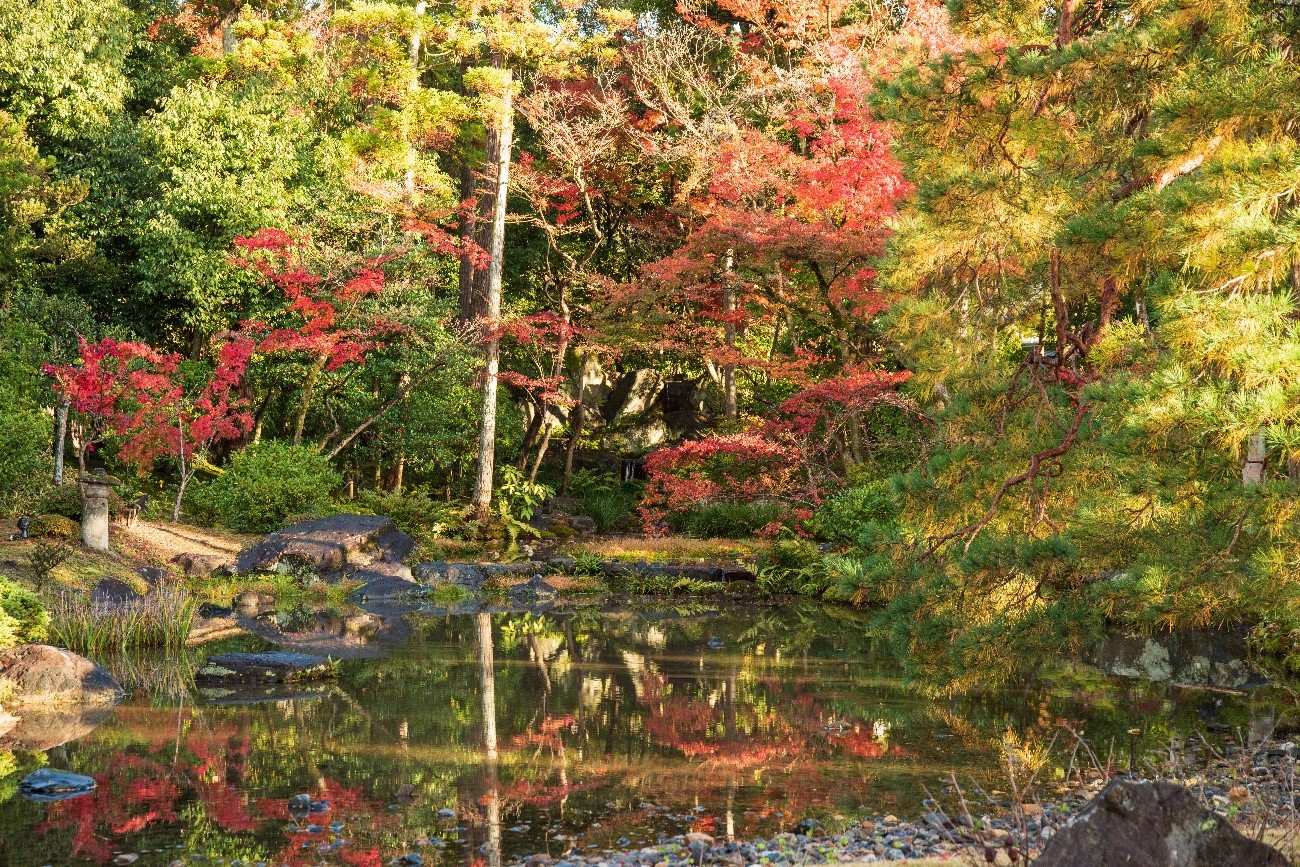Keywords: The Ueyakato Landscape Research Team's Japanese Garden Lexicon
The Natural Landscape Garden
2023/06/05
 At Murin-an, the Higashiyama mountains are fused with a rustic grass lawn and dynamic water stream to conjure a startlingly realistic sensation of a mountain village landscape.
At Murin-an, the Higashiyama mountains are fused with a rustic grass lawn and dynamic water stream to conjure a startlingly realistic sensation of a mountain village landscape.Sometimes reinvention and recapitulation go hand in hand. This would seem to be the case, for example, with the natural landscape gardens of Japan’s modern period. The mirroring of natural landscapes, of course, has always been axiomatic to the Japanese gardening tradition. Like virtually all Japanese garden genres preceding it, these natural landscape gardens also adhered to this traditional first principle. In doing so, however, they went much further than earlier Japanese gardens in pursuing scenery that not only emulated natural landscapes, but recreated them at their full scale.
This new landscape garden style was an expression, also seen in art and literature, of the interest in realistic depictions of nature that was sparked by the Japanese experience of modernization. Many of the form’s most celebrated examples were created when Japan’s new political and economic elites came to Kyoto to create vacation homes. Of these, Murin-an is arguably the most famous example. Created by two-time Prime Minister and noted garden aficionado Yamagata Aritomo during 1894-96, Murin-an combined the background of Kyoto’s Higashiyama mountains with a garden featuring a wild grass lawn and a constantly moving stream using water from the recently opened Lake Biwa Canal. The result was a new garden style that startlingly yet convincingly conveyed the sensation of being at the foot of a rustic mountain village landscape. Here was a new way of appreciating Kyoto’s scenic beauty ideally suited to the new elites arriving there to create vacation spaces where they could relax and entertain guests. Indeed, soon enough, the surrounding neighborhood was populated by a sprawling network of garden villas connected by their use of canal water.
The natural landscape garden’s rich literalism was certainly a far cry from the abstract symbolics of Japan’s dry landscape gardens (karesansui) and the salvationist vision of its Pure Land gardens. Stylistically, its ambitions lay much closer to the quest seen in tea gardens and strolling pond gardens to integrate guests with nature as they moved along the garden path. And of course, the desire to escape into the mountains is a familiar Japanese landscaping theme first embraced by the ancient nobility of Kyoto. Nevertheless, it seems unquestionable that with Murin-an’s realistic depiction of a mountain torrent—with all its variations in speed and sound—winding its way through a pastoral landscape, a new appreciation of dynamics previously undreamt of in the Japanese garden tradition had arrived.
 Beyond Murin-an’s grass lawn, the sights and sounds of a waterfall spreading out into a widening stream unfolds before visitor’s eyes and ears.
Beyond Murin-an’s grass lawn, the sights and sounds of a waterfall spreading out into a widening stream unfolds before visitor’s eyes and ears.
